Explore Cornwall by train in just one week on this rail itinerary packed with beaches, gardens, castles and pretty fishing villages as you travel from St Ives to Falmouth, Newquay, Looe and Plymouth.
* This site contains affiliate links, where I get a small commission from purchases at no extra cost to you.
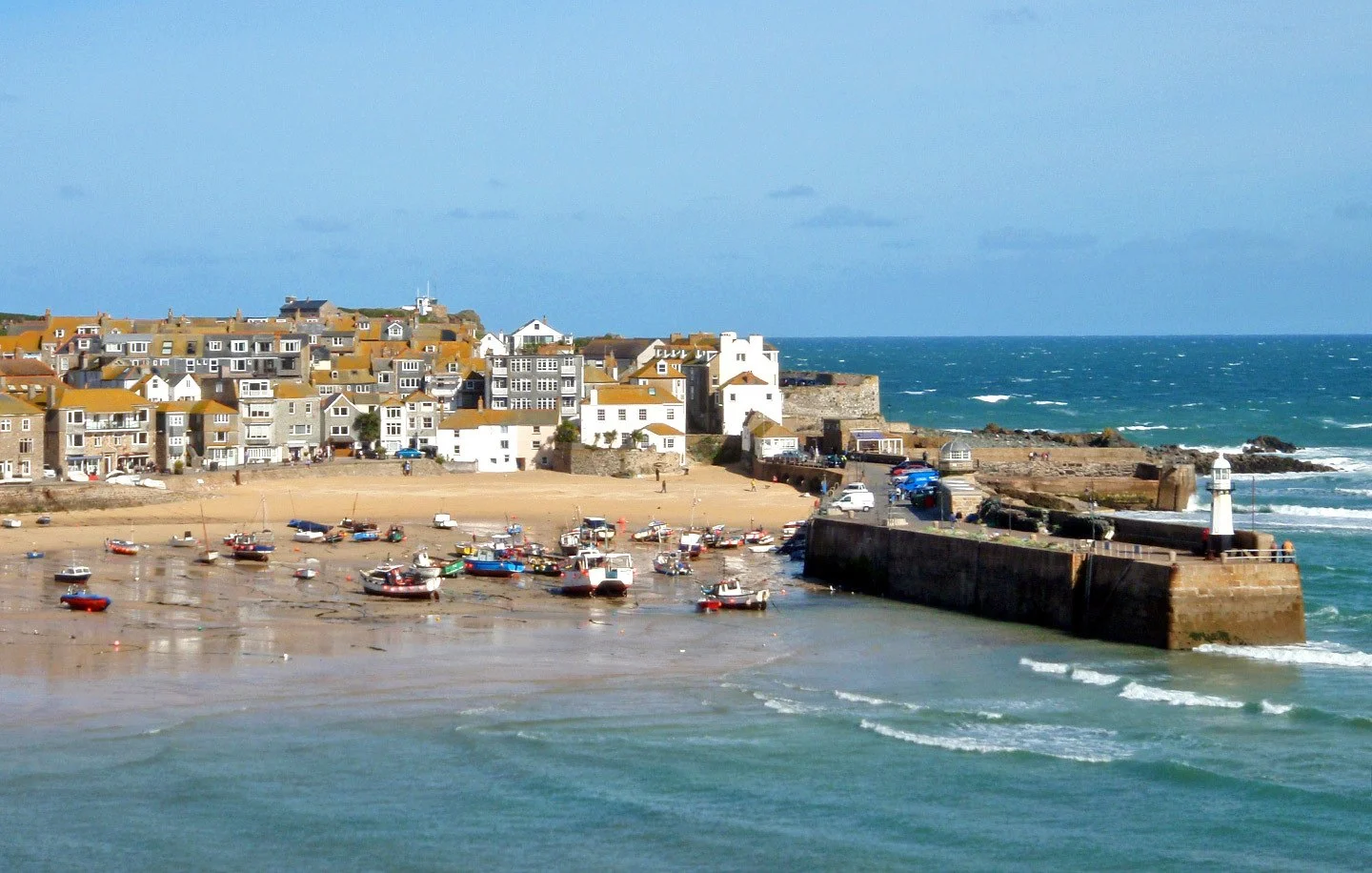
Surf on golden beaches, visit colourful fishing villages, walk rugged coast paths, admire tropical gardens and feast on Cornish pasties and cream teas as you travel from St Ives to Plymouth though Falmouth, St Austell, Newquay and Looe in just one week.
And you can do it all without a car on this Cornish rail journey, exploring the far south-west of England along some of Cornwall’s most beautiful coastal and countryside railways. This Cornwall by train itinerary will show you which trains to take, how much they cost, how to book tickets and what to see, do and where to stay along the way.
One-week Cornwall by train itinerary
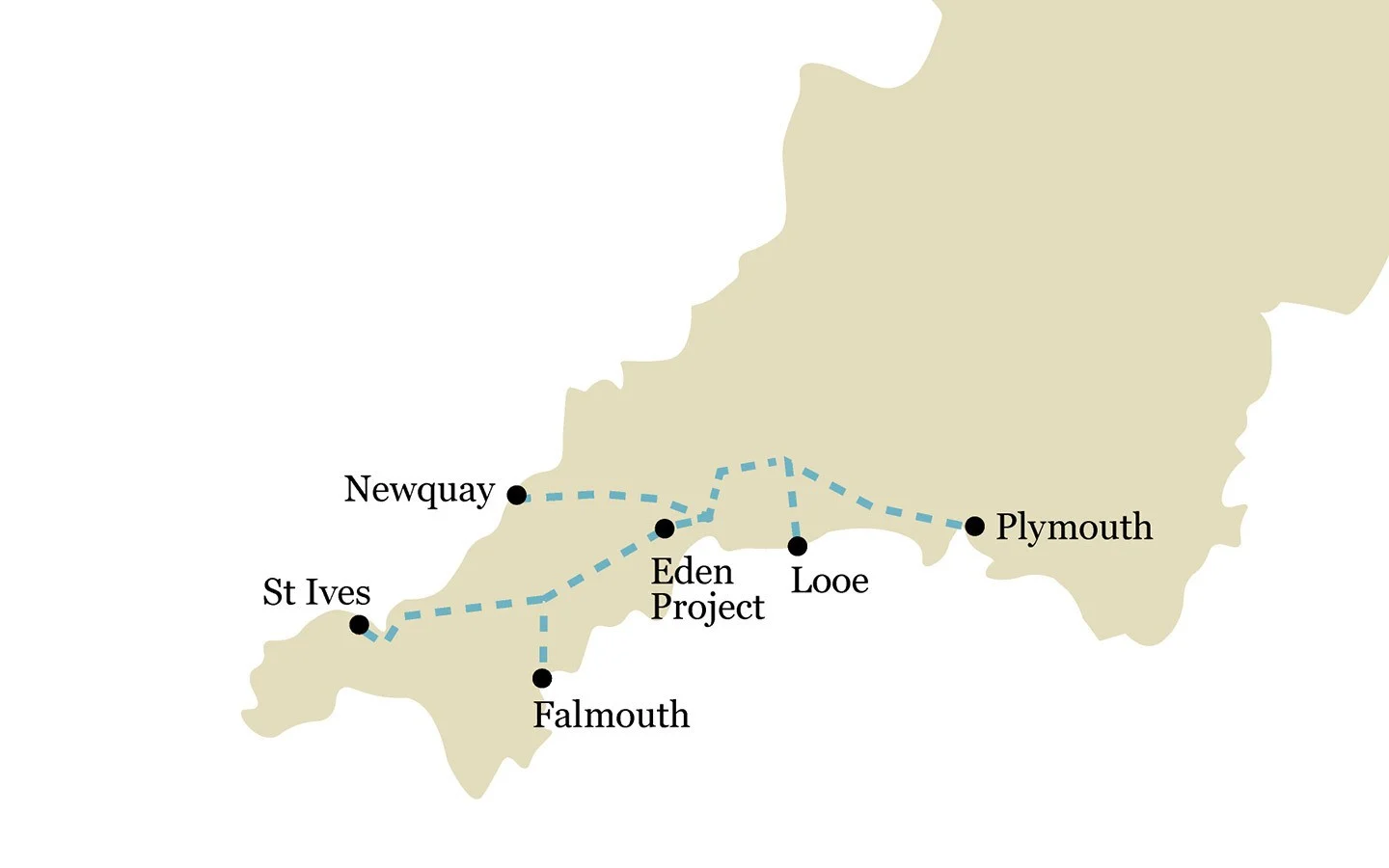
Day 1: St Ives
Start your Cornwall by train trip with a full day in St Ives. If you’re travelling from London, you can catch the Night Riviera Sleeper overnight service to Cornwall – one of only two sleeper trains in the UK. The train departs from London Paddington at 23.45 (excluding on Saturdays) and arrives into St Erth at 07.42 the following morning.
Choose from a seat or a single or twin sleeper compartment with washbasin (and shared toilets at the end of each carriage), and there’s a café-bar in the lounge car. Then change in St Erth onto a local train for the 10-minute journey along the St Ives Bay Line.
Grab a seat on the right side of the train for great views as the line hugs the coastline, running alongside the wide sandy beaches of Hayle Towans and Carbis Bay. Then you have the rest of the day to explore St Ives – if you need to store your bags, there’s a left luggage facility available at the Travel Centre next to St Ives train station.
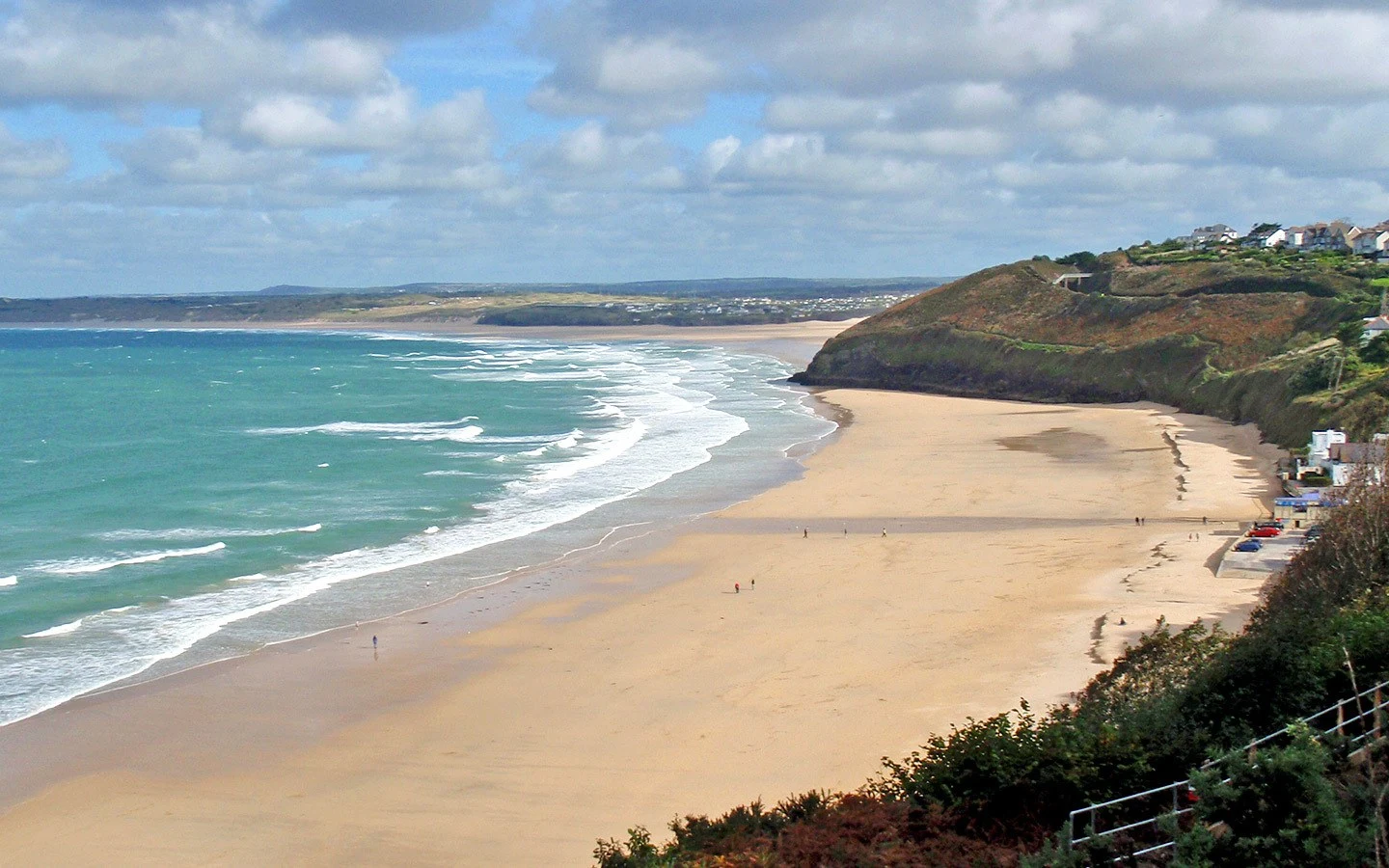
St Ives’ clear light has made it a favourite with artists, and it’s the home of the Cornish outpost of the Tate Gallery as well as the Barbara Hepworth sculpture museum, and there are plenty of artists’ studios and galleries where you can pick up an artwork of your own.
Shop the independent shops on Fore Street, soak up the sun on one of St Ives’ golden beaches, or take a hike along the South West Coast Path, following the steep, rocky cliff path towards the village of Zennor (6.5 miles/3-4 hours one way).
Where to stay in St Ives: The Pedn-Olva* hotel is perched on a cliff on the edge of Porthminster Beach, with panoramic views across St Ives Harbour. Its 30 en-suite bedrooms come with coastal-inspired décor, sea views and some have private balconies, and there’s also a sunny terrace, restaurant and heated outdoor pool.
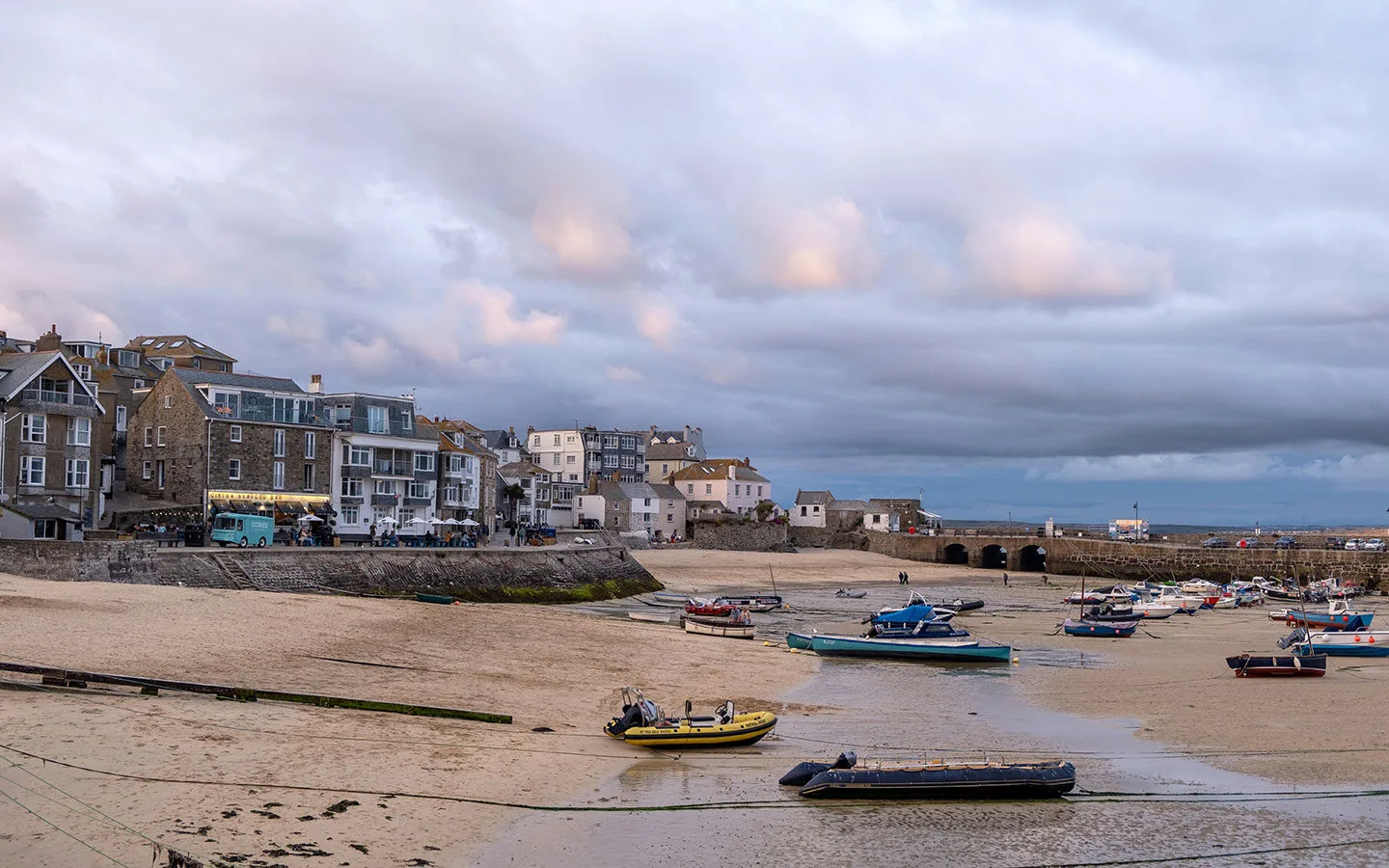
Day 2: St Ives > Falmouth
Next morning, catch the 09.02 train from St Ives for the 1.5-hour journey to Falmouth Town, changing at St Erth and Truro and arriving at 10.35. The port town of Falmouth has a long seafaring history and the sea is still a big part of local life, with sailing contests and sea-themed events, including the International Sea Shanty and Oyster Festivals.
Visit Pendennis Castle, which along with nearby St Mawes is one of two twin Tudor castles built by Henry VIII to protect the bay from invaders. Find out more about Falmouth’s maritime history at the National Maritime Museum in the dockside. Or take a boat trip along the Fal River or across the bay to St Mawes and the Roseland Peninsula.
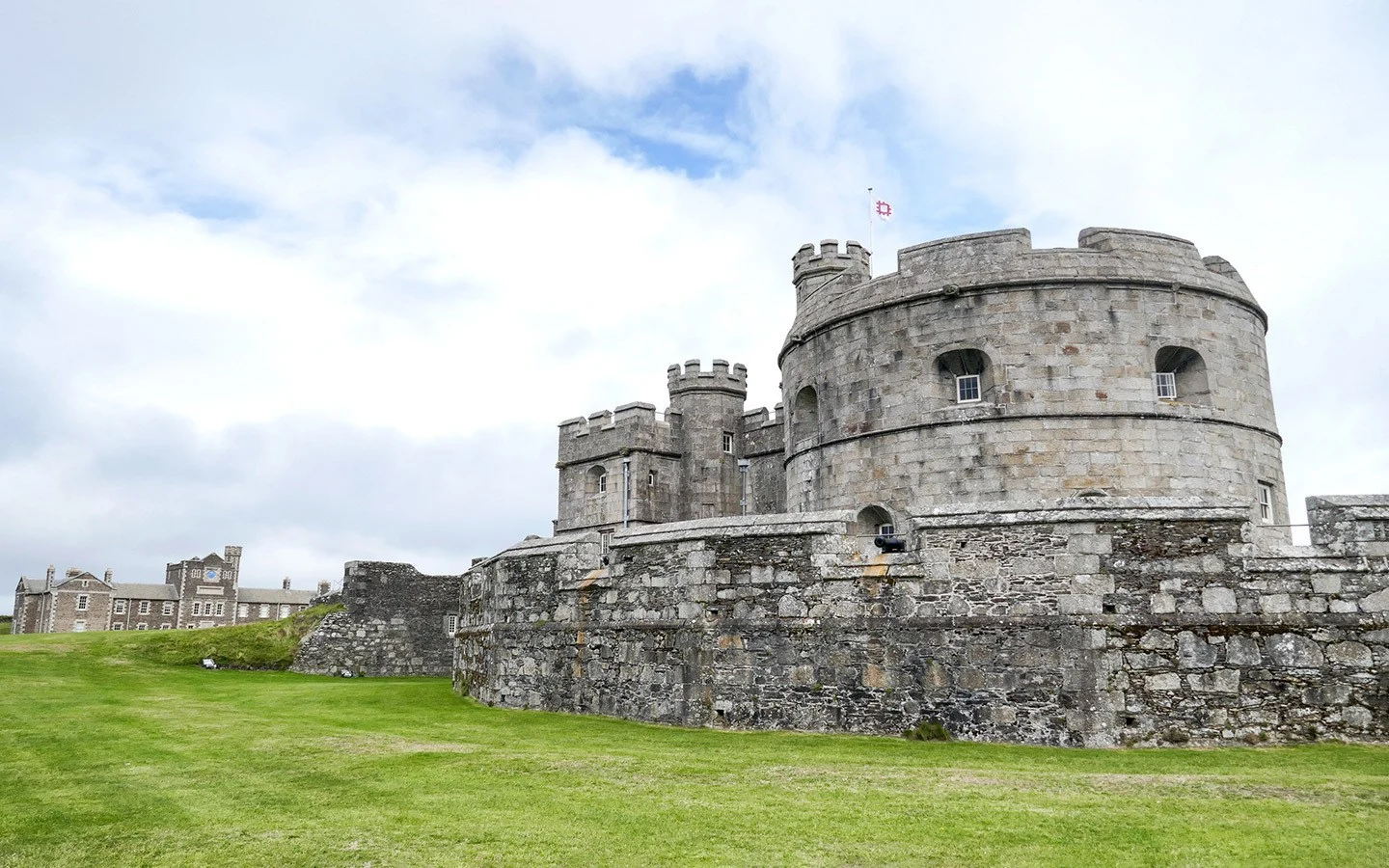
Take a walk along the seafront to one of Falmouth’s beaches – Gyllyngvase and Swanpool beaches are both just a short walk away from the town centre and are connected by the coast path. Both have beach cafés where you can stop for an ice cream.
With a big student population, it’s no surprise Falmouth has a good selection of pubs. Head to quirky bookshop-meets-bar Beerwolf Books for real ale and board games, or the harbourside Chain Locker in one of the oldest buildings in Falmouth.
Where to stay in Falmouth: Above the Star and Garter* gastropub are three serviced apartments. Each has views across Falmouth Harbour, an open plan kitchen/lounge and one or two bedrooms – the attic Crow’s Nest also has a log-burner. You’re provided with a welcome pack of local produce, and have the bar and restaurant just downstairs.
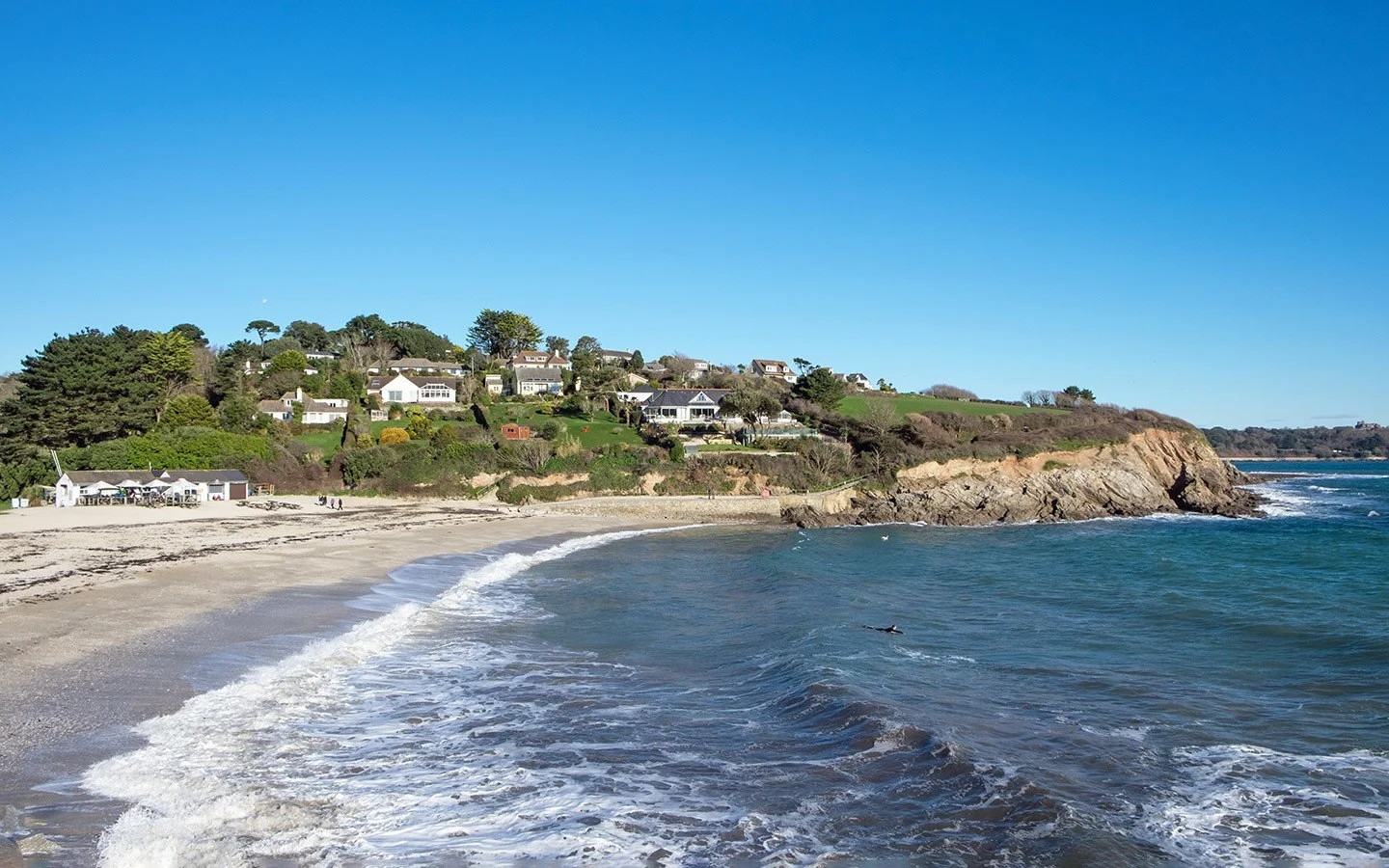
Day 3: Falmouth > Eden Project
Next travel east towards the Eden Project – you can’t get all the way there by train so have to catch a bus for the last part of the journey. First take the 09.18 train from Falmouth Town, changing at Truro onto the 09.53 to St Austell, which arrives at 10.08. Then catch a no 101 bus, which takes 30 minutes from St Austell bus station to the Eden Project.
The 35-acre Eden Project was a china clay quarry before being planted with 3000 species of plants and trees by an ecological charity. The site is dominated by the world’s largest greenhouses – two giant biomes recreating the climate and vegetation of the rainforest and the Mediterranean (a great place to hide out if the weather’s misbehaving).
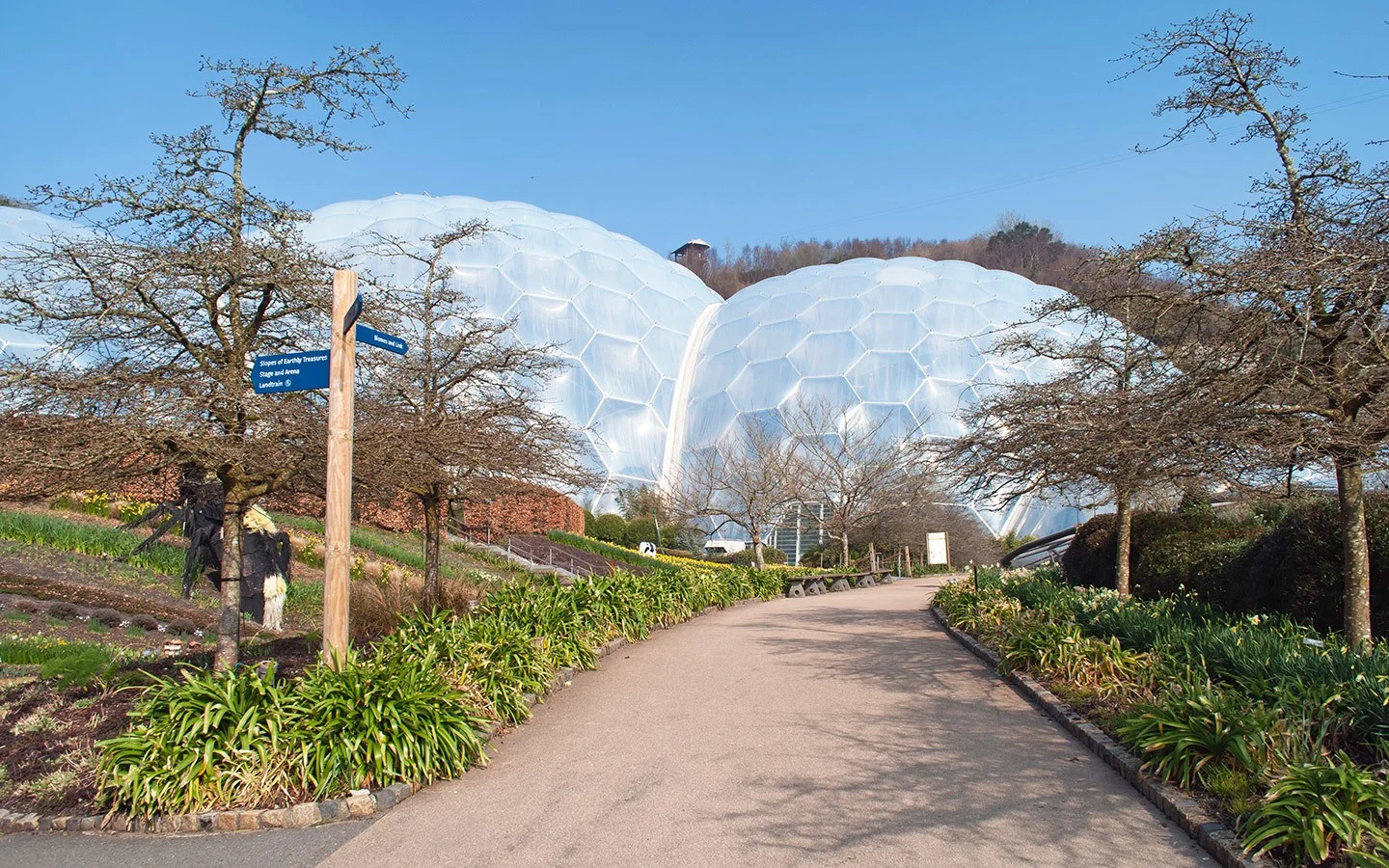
Get up in the treetops on the rainforest canopy walkway, explore gardens dotted with giant sculptures, see concerts in summer and ice skate on an indoor rink in winter. The Eden Project is also home to England’s longest and fastest zip wire, which runs over the top of the biomes at 60mph, as well as an aerial trekking course and giant swing.
Where to stay at the Eden Project: The YHA Eden Project* has compact en-suite ‘Snoozebox’ rooms made from recycled shipping containers right on site, sleeping one–four people. Or Ivy House* in St Austell is a boutique bed and breakfast in a traditional Cornish manor house with three bedrooms, colourful gardens and locally sourced breakfasts.
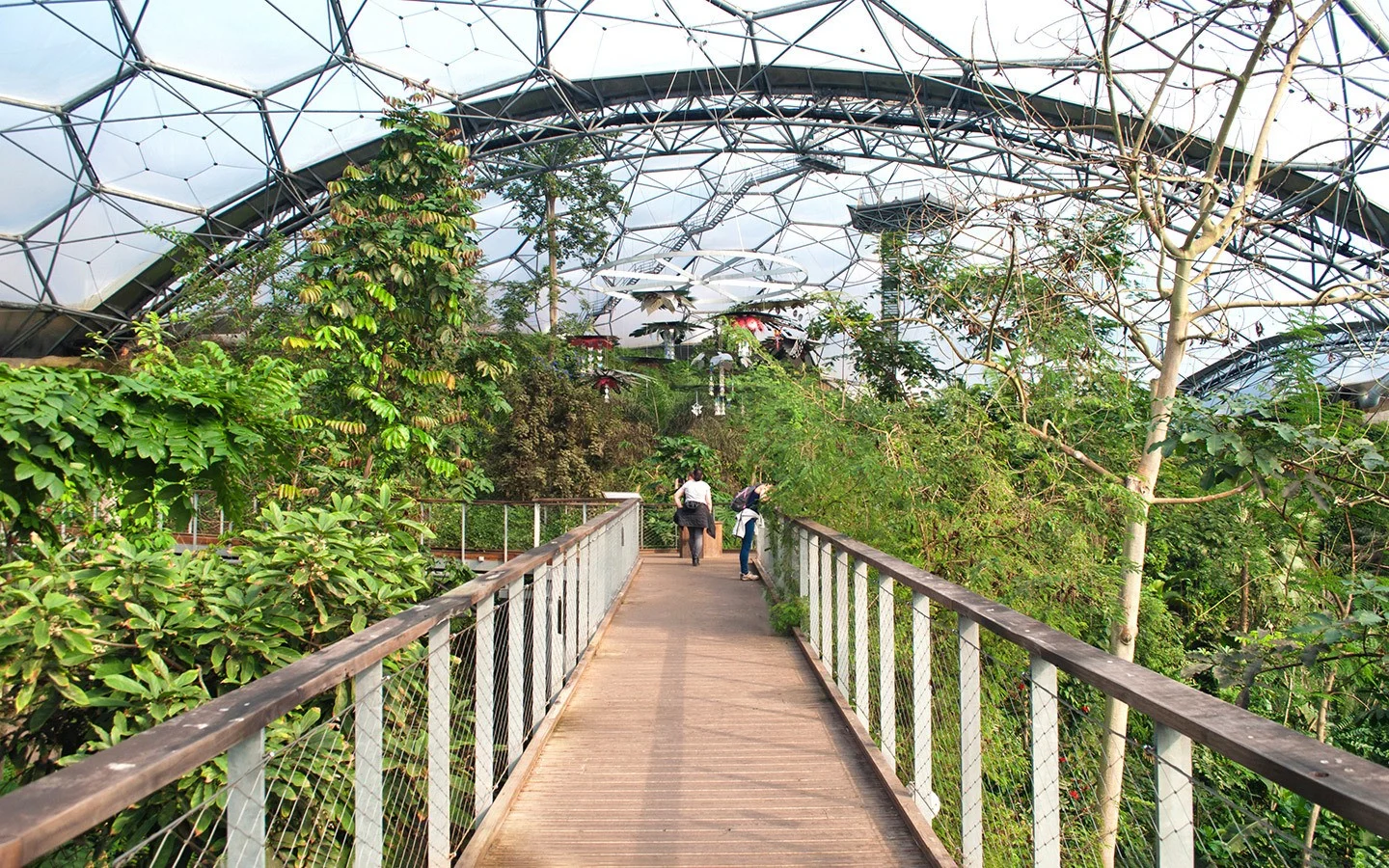
Day 4: St Austell > Newquay
The following day, head back to St Austell to catch the 09.46 train to the surf town of Newquay. The journey takes just over an hour, with a change at Par, and arrives into Newquay at 11.04. The stretch from Par to Newquay is known as the Atlantic Coast Line and travels across the Luxulyan Valley and Goss Moor Nature Reserve.
Newquay is surrounded by 11 beaches. Closest to town are Tolcarne, Harbour, Towan and Great Western, and you’ll also find the famous surf beaches of Fistral Beach, Lusty Glaze and Watergate Bay within walking distance. Watch the surfers in action, give it a go with a surf lesson, or try other watersports like paddleboarding or wakeboarding.
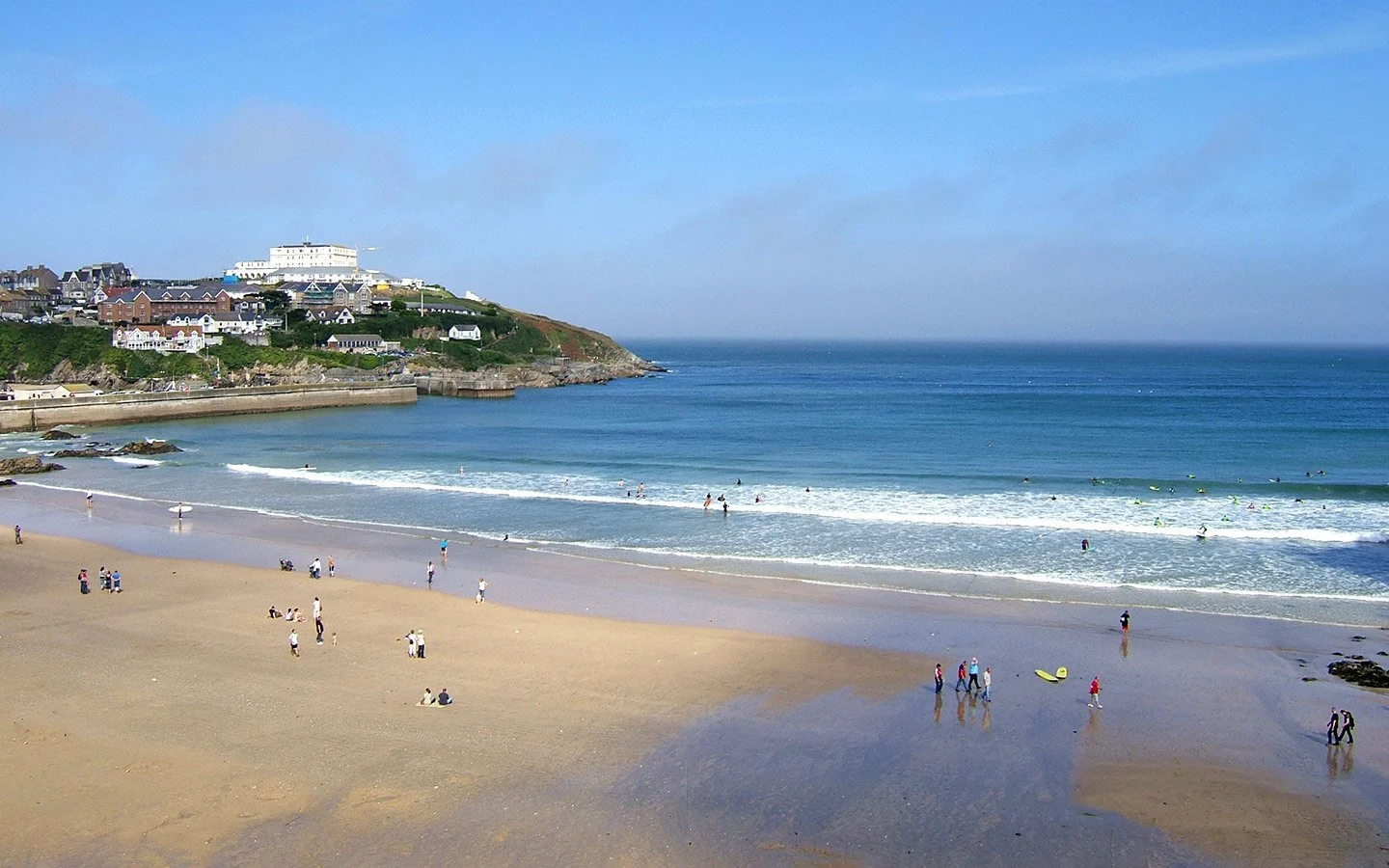
Head to Newquay Harbour to watch the fishing boats come in with a Cornish pasty (just watch out for seagulls). Or head underwater at the Blue Reef Aquarium with a mix of local and tropical fish species, talks and feeding sessions. Newquay’s also known for its nightlife, with busy bars and clubs – and more than a few stag and hen dos – in summer.
Where to stay in Newquay: The grand Victorian Headland Hotel* occupies a prime position on a clifftop overlooking Fistral Beach (as seen in the film of Roald Dahl’s The Witches). It has a mix of rooms and cottages, all individually designed and some with sea views, as well as a luxurious spa, indoor and outdoor pools, and two restaurants.
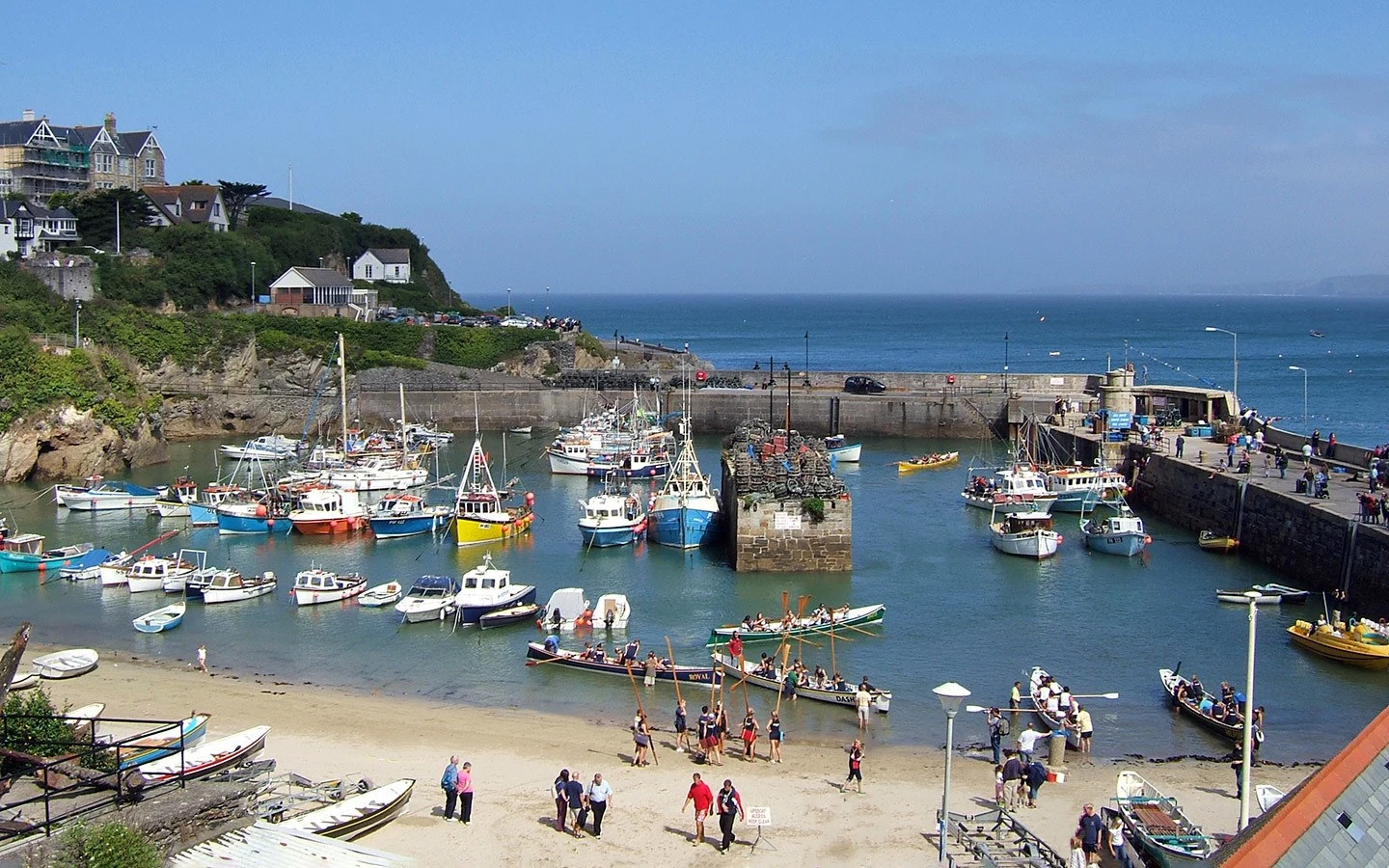
Day 5: Newquay > Looe
Then leave the Atlantic Coast behind and travel south to Looe. The journey takes around 3 hours, departing Newquay at 09.15 and arriving into Looe at 12.06, with changes at Par and Liskeard. The final stretch of the trip is along the scenic Looe Valley Line, which runs from Liskeard to Looe past woodland and an estuary full of birdlife at low tide.
The pretty fishing port of Looe is split into two separate towns – East and West Looe – connected by a bridge across the river. Go for a paddle on sandy East Looe Beach, follow the South West Coast Path along the headland on a 5-mile coastal walk to Polperro, or take a boat trip to Looe Island, a marine nature reserve with medieval ruined chapel.
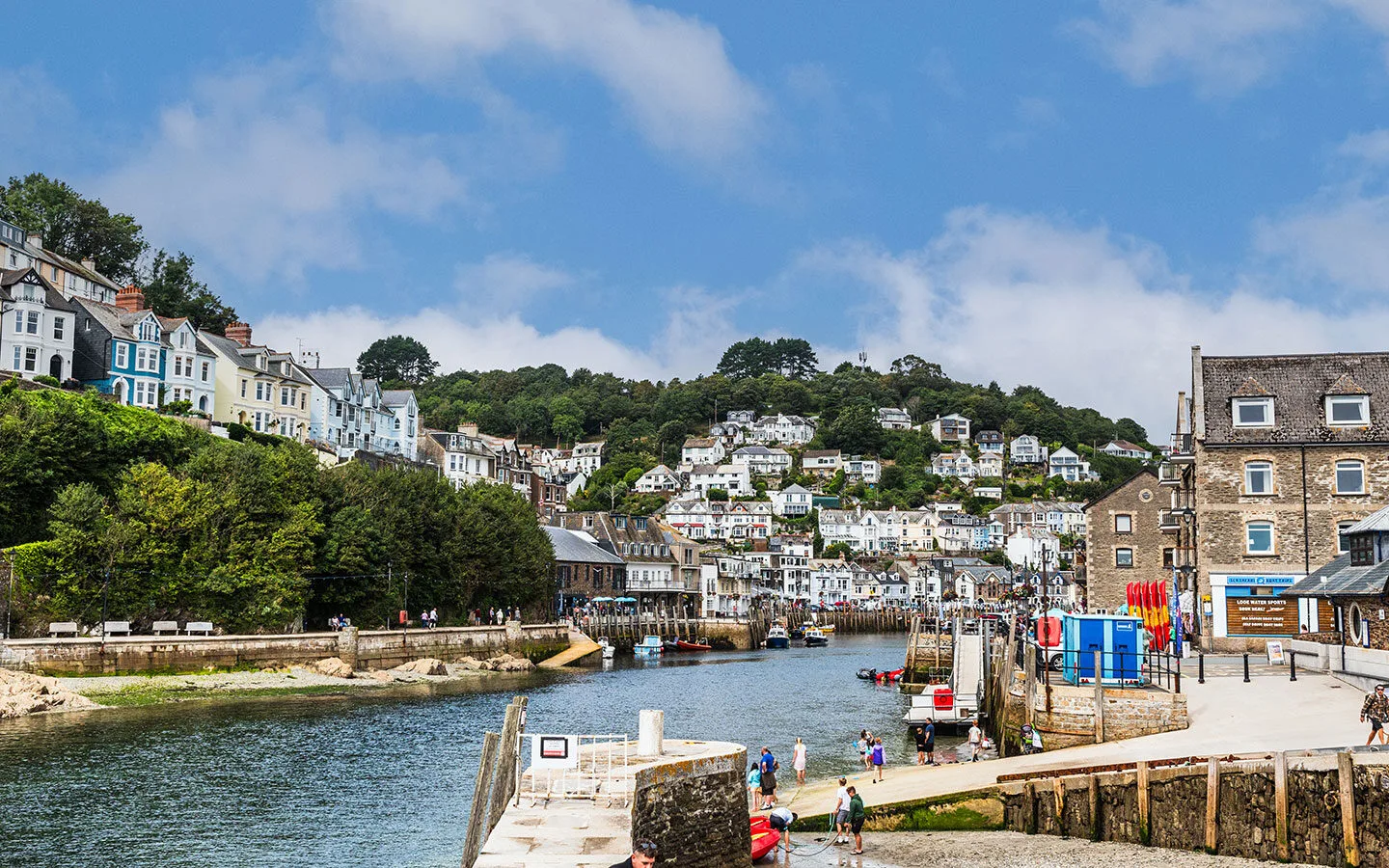
Learn about Looe’s fishing industry at the Old Sardine Factory heritage centre, and try the day’s catch at one of the town’s restaurants. Taste local wine with a tour and tasting at Looe Valley Vineyard just outside town. And you can’t visit Cornwall without trying a traditional Cornish pasty – Sarah’s Pasty Shop in East Looe has won awards for theirs.
Where to stay in Looe: Schooner Point Guest House* is a bed and breakfast on the hillside in West Looe, with views along the estuary. There are four en-suite bedrooms, with refillable toiletries to reduce plastic waste, and a full Cornish breakfast is included.
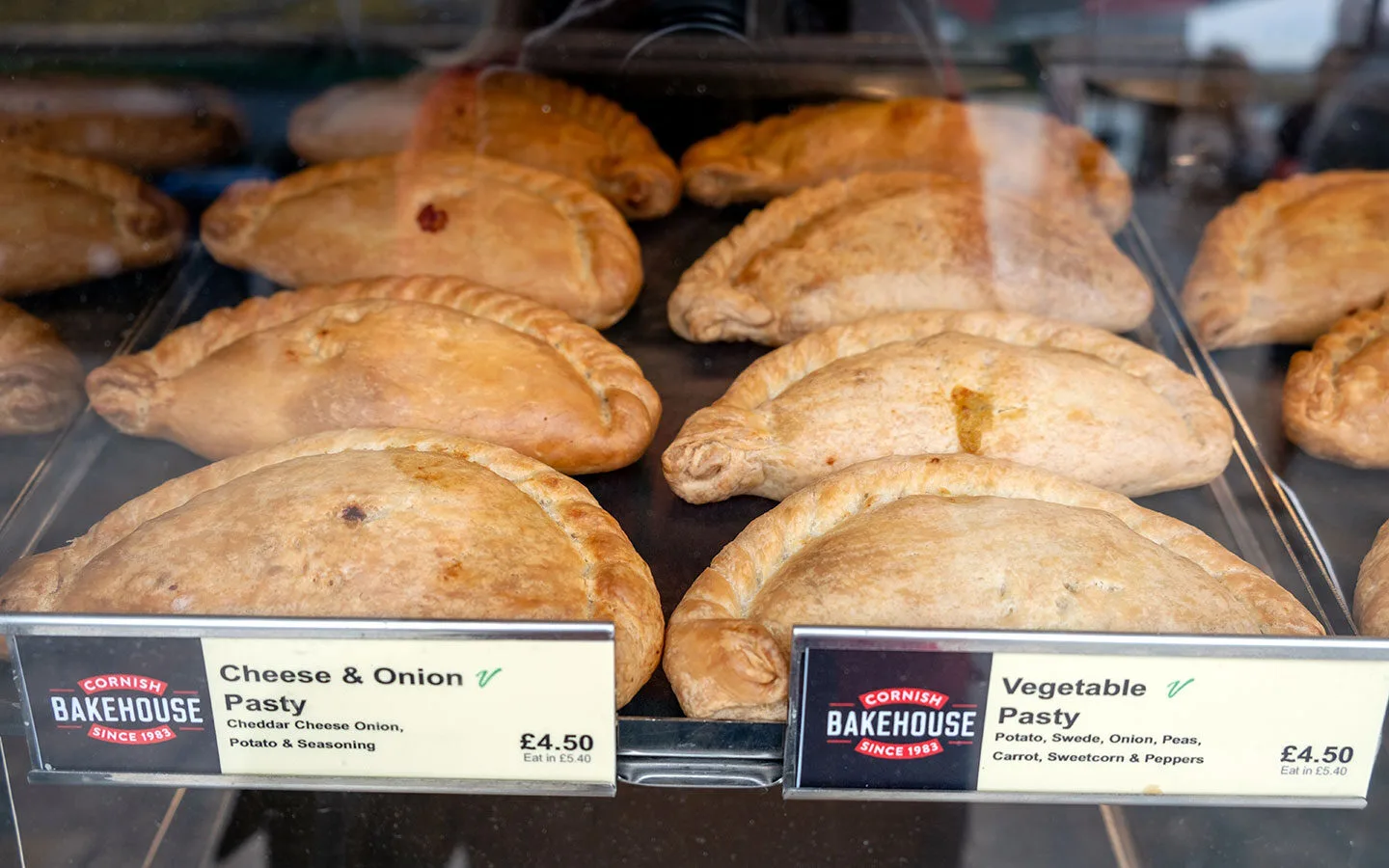
Day 6: Looe > Plymouth
Finish your Cornwall by train trip by catching the 10.08 train from Looe, changing at Liskeard then crossing the county border into Devon as you arrive in Plymouth at 11.07. Plymouth is one of the UK’s biggest and most important Naval bases.
This is where the Pilgrim Fathers set sail for America and where the Spanish Armada was beaten – though according to legend, Sir Francis Drake refused to set sail until he’d finished the game of bowls he was playing on Plymouth Hoe.
Walk around the waterfront park at Plymouth Hoe, where you can see Drake’s statue, the Armada Monument and Naval War Memorial. Climb the 93 steps to the top of Smeaton’s Tower lighthouse for views across Plymouth Sound, or visit the 17th-century Royal Citadel fortress – it’s still used by the military base so you need to take a guided tour.
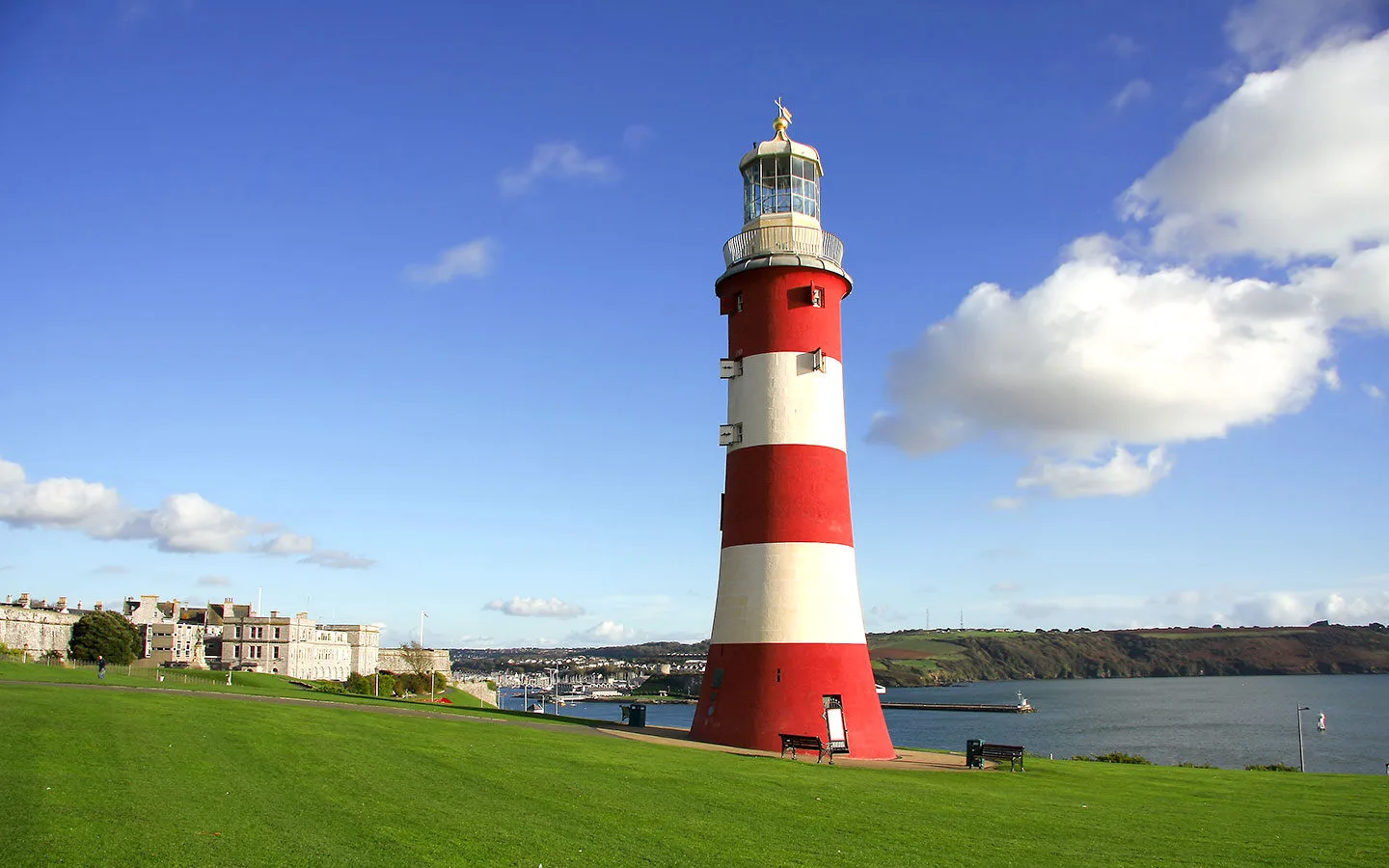
Head back in time to Plymouth’s historic Barbican area with its cobbled streets and Elizabethan warehouses converted into museums, galleries and boutiques.
It’s also home to the Plymouth Gin Distillery, England’s oldest operating gin distillery where you can take a tour. Then finish the day in Royal William Yard, a former victualling yard which supplied food and drink to navy vessels and is now full of bars and restaurants.
Where to stay in Plymouth: Residence One* is at the heart of Royal William Yard, surrounded by places to eat and drink. The building originally housed Royal Navy officers, but has been converted into 14 boutique bedrooms – run by Bistrot Pierre across the green – with original Georgian features and a few nautical-themed touches.

Day 7: Plymouth
Spend your last morning seeing more of Plymouth. The National Marine Aquarium is the UK’s largest aquarium, with over 400 different marine species, from the coasts of Devon and Cornwall to the Pacific. Follow the journey of the Pilgrims from Plymouth to the New World at the Mayflower Museum. Or take a boat trip around Plymouth Sound.
Then if you’re flying back home, the nearest airport is in Exeter, around an hour from Plymouth by train. From Exeter St Davids station you can catch the 56 bus to Exeter Airport, which runs every half hour and takes 35 minutes. Or if you’re travelling back to London, direct trains from Plymouth to London Paddington take 3 hours 10 minutes.
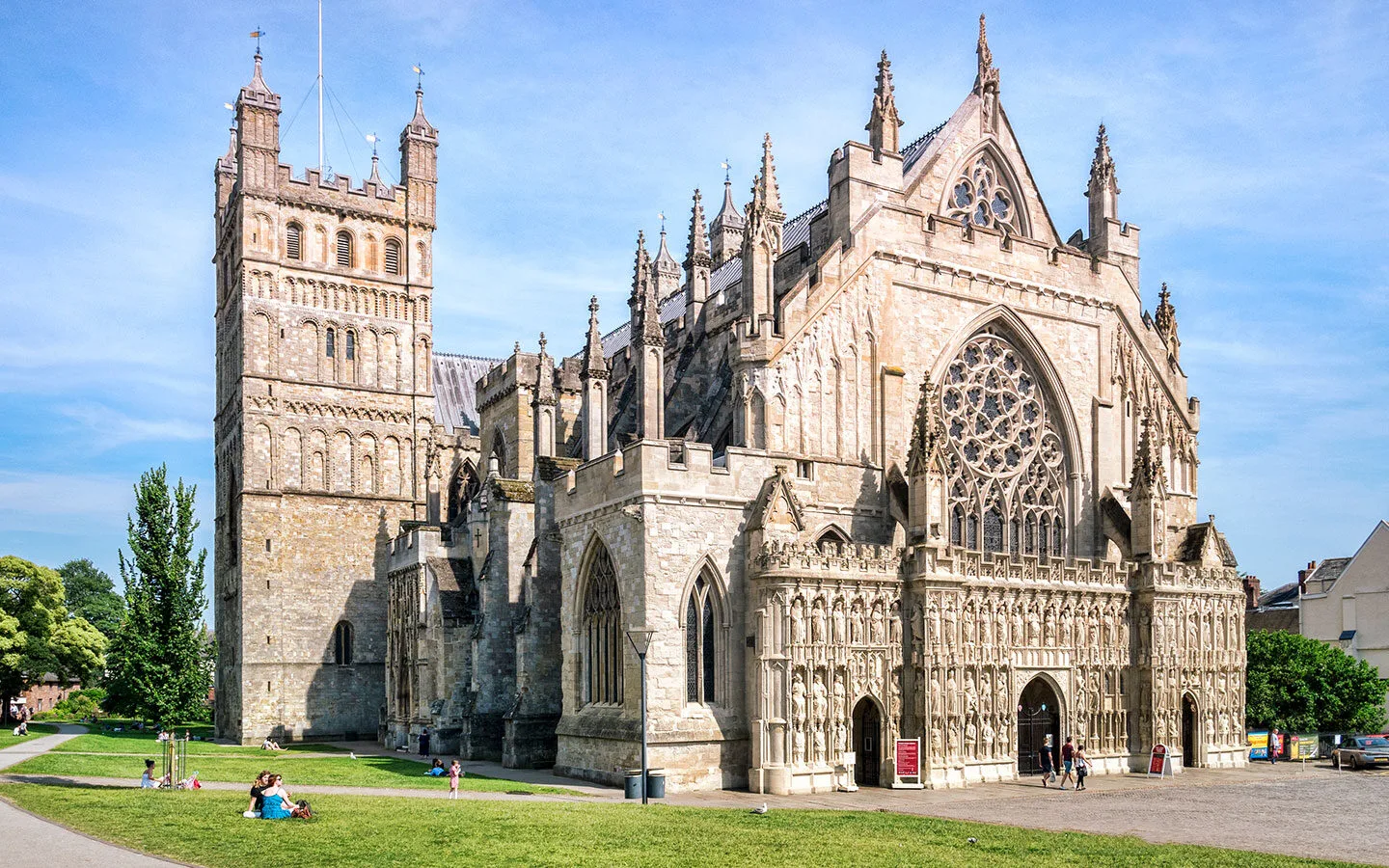
More time?
If you have more time, you can carry on east into Devon to explore seaside resorts like Paington, Torquay, Dawlish and Exmouth. And Devon has its own scenic train routes too.
The Riviera Line from Paington to Exeter is one of England’s most famous railway lines, running through cliff tunnels and right along the seafront. The Avocet Line follows the Exe Estuary from Exeter to the coast at Exmouth. Or the Tarka Line heads north from Exeter to Barnstaple through the tranquil countryside of the Yeo and Taw river valleys.
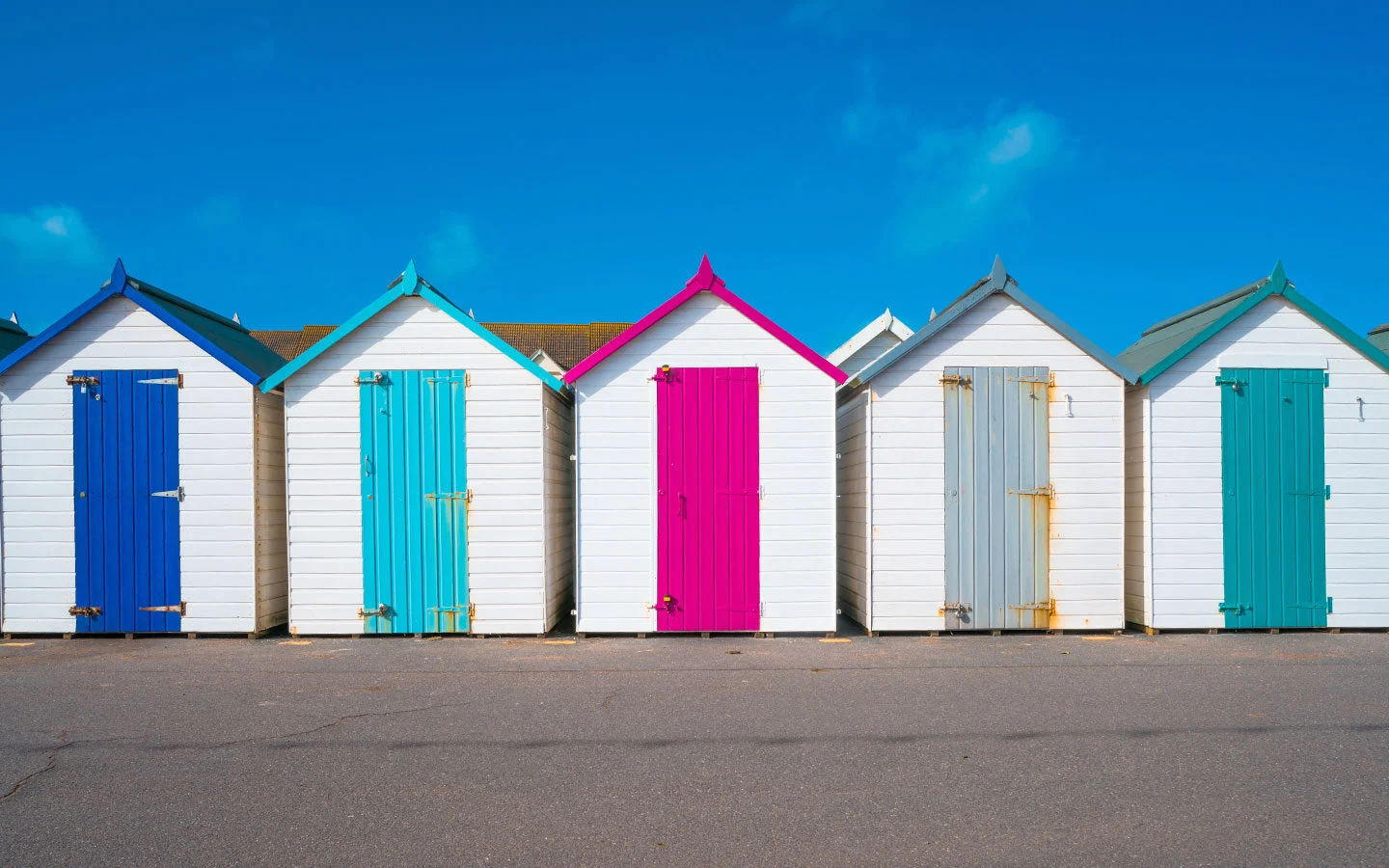
How much does it cost?
When you’re planning a Cornish rail trip, you can either book individual tickets or get a railpass, which can be a better deal if you’re under 28/over 60, want more flexibility or are booking late. Here’s how the prices break down for the two different options on this route.
Individual tickets
Ticket prices depend on how early you book and if you’re booking a specific train or want to be flexible. There are three main fare categories: Advance, Off-Peak or Anytime. Advance are cheapest and can be booked 8–12 weeks in advance, but are non-transferable so you’re tied to a specific train. Off-Peak services are valid on any train outside weekday peak hours. And Anytime are the most expensive but can be bought on the day and used on any train.
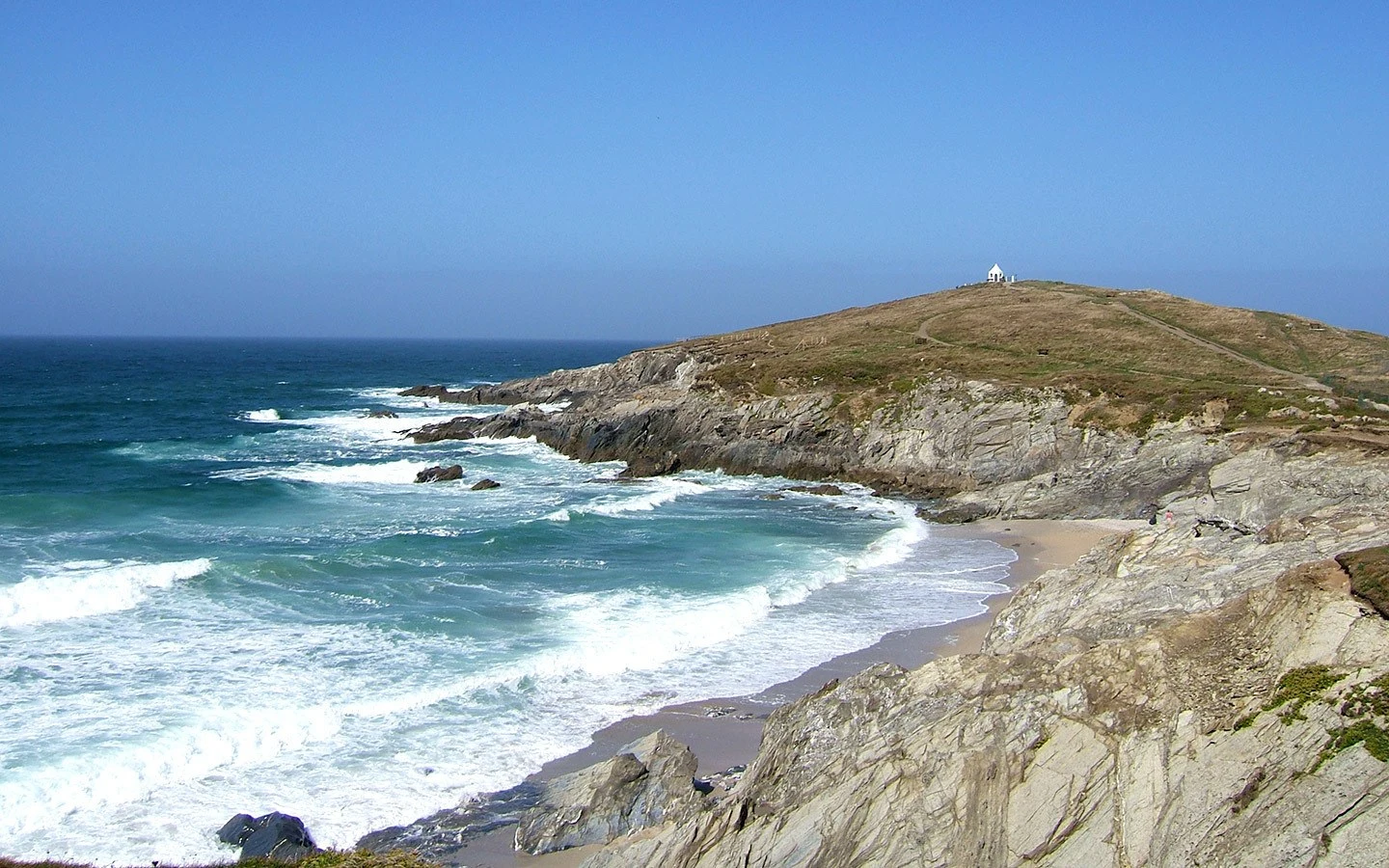
Using the cheapest Advance fares, the cost of trains on this route starts at £83 per person:
- London > St Ives: from £43
- St Ives > Falmouth: from £9.50
- Falmouth > St Austell: from £8.20
- St Austell > Newquay: from £6.10
- Newquay > Looe: from £8.80
- Looe > Plymouth: from £7.70
For the Night Riviera Sleeper, the price includes a seat (which is booked like a normal train ticket). Then if you want to upgrade from a seat to a cabin you pay a supplement, which starts at £42.50 for a single-berth room or £32 per person for a twin-berth room.
You can also save a third on all rail fares with a Railcard*. These cost £30 with different versions for 16–25s, 25–30s, Seniors and Disabled People. You can also get a Two Together railcard for two named adults travelling together, or a Friends and Family Railcard for up to four adults and four children. Both UK and overseas residents are eligible.

The railpass option
There are various rail passes available, and which you’re eligible for depends on where you live. If you live outside the UK, you can can get a InterRail/Eurail pass (InterRail is for European residents and Eurail is for non-European residents) or BritRail pass. They work in a similar way and cover either a set time period or a certain number of travel days.
For the Cornwall by train itinerary, the best InterRail/Eurail option is the One Country Great Britain pass for 5 travel days within 1 month (£220 adults, £191 youths aged 12–27 or £198 seniors over 60). Or the best BritRail option is the South West Pass for 8 Consecutive Days (£198 adults, £158 youths aged 16–25, £168 seniors over 60).
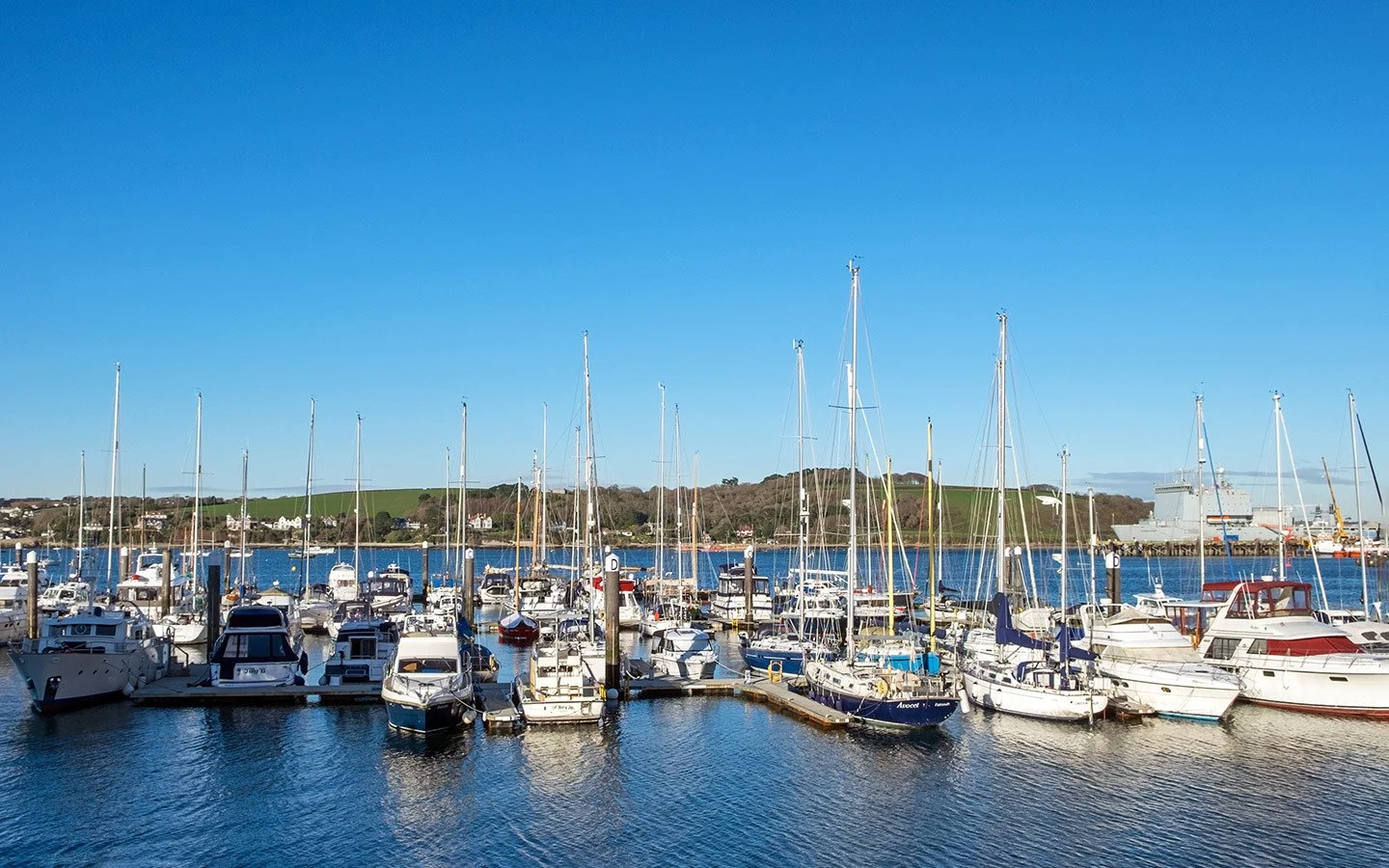
Passholders are recommended to make seat reservations, but it’s only compulsory if you’re travelling on the Night Riviera Sleeper. You can reserve a seat or sleeper cabin online via the GWR website or at any UK train station (though cabins do sell out fast). If you have a railpass it’s free to reserve a seat but you do need to pay a supplement for a cabin.
Rover tickets are also available, which give you unlimited train travel in a certain region, and are available to both UK and overseas residents. The best option for this itinerary is National Rail’s Freedom of Devon and Cornwall Rover (8 in 15 Days).
It costs £97.50 for adults, £48.75 for children aged 5–15 and there are discounts for Railcard holders. The Night Riviera Sleeper isn’t included so must be booked separately.
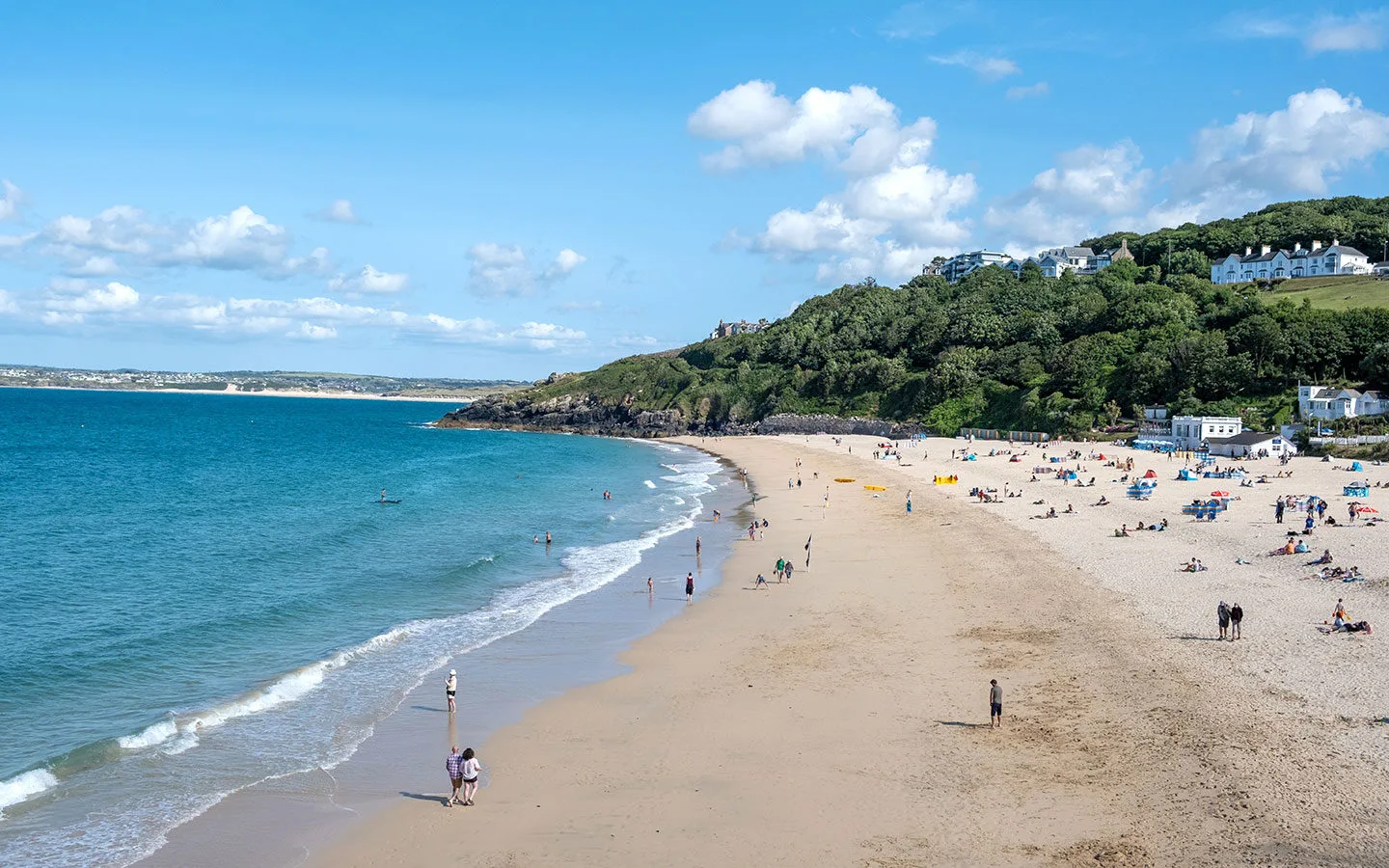
How to book
There are a variety of websites where you can book UK train journeys, but some charge a booking fee. To avoid fees you can book with Transport for Wales* (excluding the Night Riviera Sleeper which must be booked directly through GWR) and either use a mobile ticket on your phone or collect them from a ticket machine or a counter at the station.
Or if you have an international credit card you can book with The Trainline for a small fee.
Don’t want to do it yourself? You can also book a custom trip based on this Cornwall by train itinerary through our partners Byway,* the flight-free holiday platform, which includes transport and accommodation.
Save for later
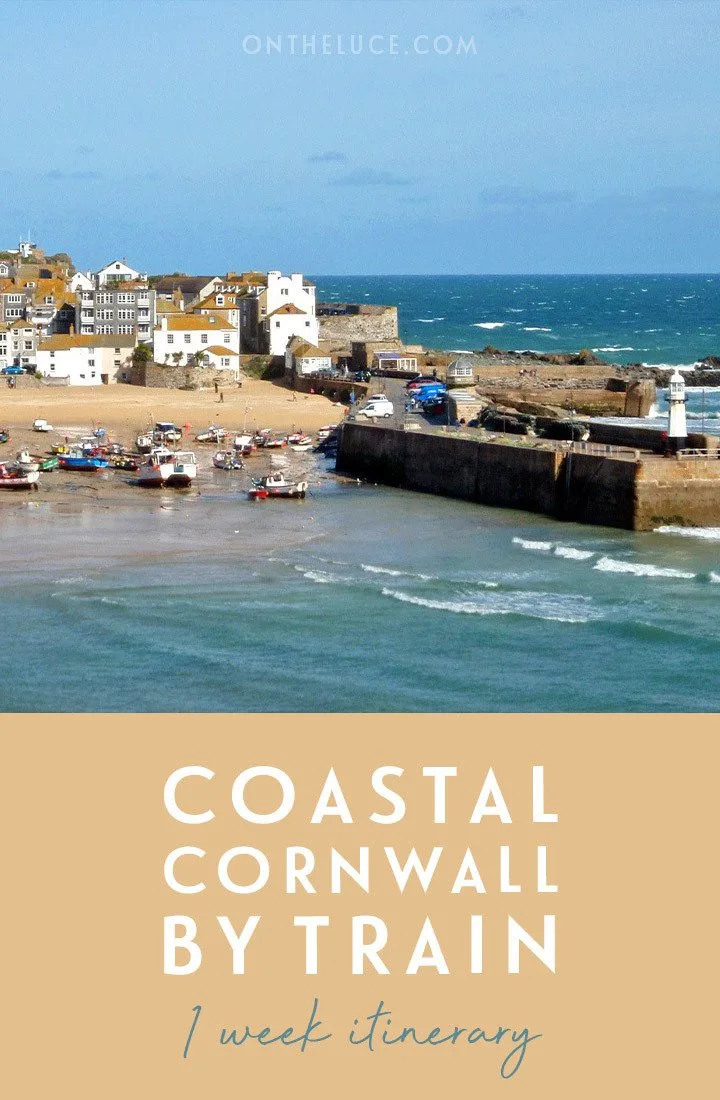




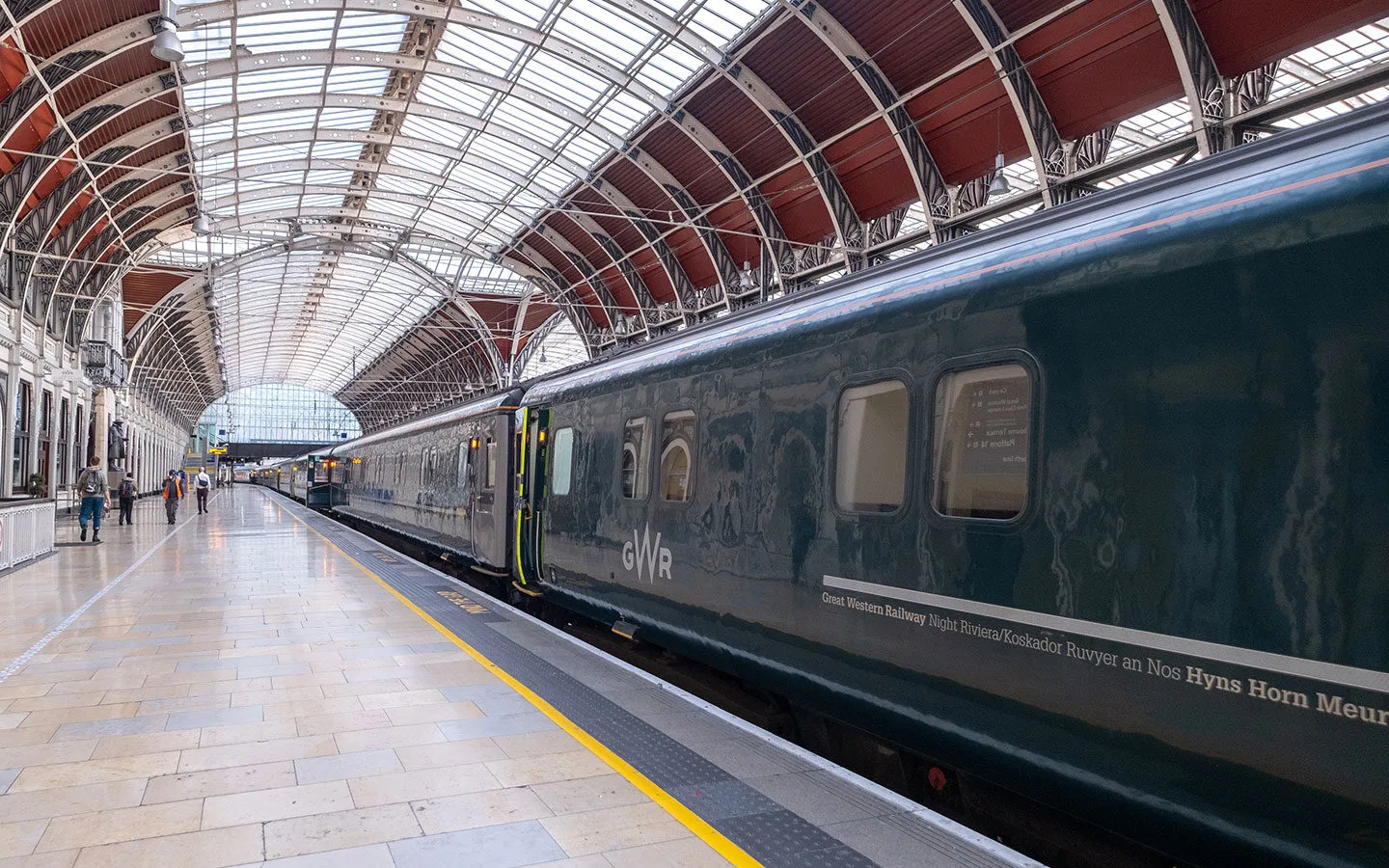
DOUGLAS HAY
Friday 23rd of July 2021
My wife and I are intending to travel to England from Australia some time next year, if practical. Please advise whether on the train trips elderly ( 82 / 73) disabled persons are catered for both being in wheel chairs? Other than being disabled (inability to walk) both couples are quite well. Please advise by return email. Thank you. Douglas Hay
Lucy Dodsworth
Wednesday 28th of July 2021
Hi Douglas, trains in the UK are accessible to wheelchairs – you can request assistance via and app now to make sure that there is ramp access etc (see https://www.nationalrail.co.uk/stations_destinations/plan-assistance.aspx), ideally booked in advance especially in smaller stations. There's also a Disabled Railcard available which saves 1/3 of fares for £30.